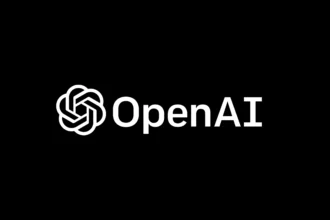What are Red Teamers in OpenAI?
The digital landscape is constantly evolving, particularly in the realm of artificial intelligence (AI). And just like every superhero needs a formidable foe, AI systems require their own version of scrutiny – and that’s where the red teamers step in. Now, you might be wondering, what in the world does that mean? Fear not; we’re about to break it down in an engaging and comprehensive manner.
So, what are red teamers in OpenAI? Simply put, red teamers are professionals who simulate adversarial attacks on AI systems to identify vulnerabilities, improve defenses, and ultimately ensure a safer, more robust AI deployment. Think of them as the “bad guys” who are hired by the “good guys” (in this case, OpenAI) to crank up the pressure on their systems and expose weaknesses that need addressing. With the rise of large language models (LLMs), the role of red teamers has expanded far beyond traditional cybersecurity, incorporating novel methods of testing AI systems beyond mere binary attack and defense scenarios.
Table of Contents
ToggleThe Evolution of Red Teaming: A Brief History
The term “red teaming” has roots steeped in military exercises, where teams simulate enemy attacks to evaluate the readiness of defenses. Gradually, this concept migrated into cybersecurity. Organizations started appointing internal or external teams to emulate the tactics and strategies of cybercriminals, identifying flaws in their security posture. So essentially, any good hacker could moonlight as a red teamer by poking around and exploiting potential weaknesses.
However, with the introduction of AI technologies, particularly LLMs, a seismic shift occurred. The logic behind red teaming transformed, as attackers began to probe AI’s inner workings rather than just traditional software vulnerabilities. Red teaming shifted from a narrow focus on cybersecurity to encompass comprehensive evaluations of AI models, their algorithms, and data training mechanisms. The ramifications of an unchecked AI can be enormous; hence, bringing red teamers into the fold was more crucial than ever.
The Role of Red Teamers in AI
In the current landscape, what do red teamers actually do for OpenAI and similar organizations? Let’s unpack this role through several critical tasks:
- Vulnerability Assessment: Just like your teenager trying to break into the family Wi-Fi password, red teamers strive to infiltrate AI systems, assessing their defenses and identifying possible areas of exploitation. They conduct these assessments by pretending to be malicious actors with the aim of seeing how easily they can exploit a system.
- Simulating Attacks: Red teamers not only look for flaws but also simulate various types of assaults that could potentially harm the system. This includes generating adversarial samples that make AI models behave unpredictably or maliciously.
- Behavioral Analysis: The behaviors and responses of AI systems can reveal a multitude of vulnerabilities. Red teamers systematically analyze what happens when AI is exposed to different inputs, determining if the model’s output is reliable and trustworthy.
- Reporting and Recommendations: At the end of their engagements, red teamers document their findings and provide actionable insights and recommendations to improve the AI’s robustness. Think of it as writing a comprehensive report card for your kid after school.
The Importance of Red Teaming in AI Safety
Imagine for a moment an LLM operating with no oversight or evaluation – a bit like letting the kid eat all that candy in the house without supervision! The results could be unpredictably worrying. Red teamers safeguard against such endeavors by ensuring a thorough vetting process before AI systems are released to the public or used in critical applications.
AI systems today are no longer just tools; they’re being integrated into our daily lives, from customer support chatbots to complex decision-making algorithms in financial institutions. Thus, the stakes couldn’t be higher. With biases, security concerns, and ethical considerations looming, unchecked AI could lead to significant consequences, including misinformation, privacy invasions, and even economic disruptions.
Red teamers leverage their expertise to identify potential failure modes and biases in AI systems. By systematically stressing the models, testing their resilience against adversarial inputs, and ensuring they behave as expected, red teamers contribute significantly to AI safety and robustness.
Red Teaming Tools & Techniques
The arsenal that red teamers use to test the vulnerabilities and robustness of AI systems is both extensive and evolving. A few common tools and techniques utilized in this domain include:
- Adversarial Attacks: This involves creating specially designed inputs meant to confuse or deceive AI systems. A classic example in image recognition systems is tweaking pixels ever so slightly that a model misclassifies them, prompting it to think a cat is actually a dog! A red teamer must be ingenious to come up with novel adversarial examples that can exploit weaknesses.
- Fuzz Testing: This technique involves the input of random data to stress-test the AI. By flooding an AI system with a series of unorthodox inputs, red teamers can identify its breaking points, leading to unexpected behaviors or crashes.
- Behavioral Testing: Red teamers observe an AI’s outputs in response to a variety of inputs. If an AI misbehaves under specific conditions, they document these instances to capture weaknesses that go against intended functionalities.
- Model Stealing: A sophisticated opponent might attempt to replicate a model by reverse-engineering it. Red teamers simulate such attacks to measure the robustness of AI systems against intellectual property theft.
The Ethical Considerations Surrounding Red Teaming
As with any superhero mission, ethical considerations are paramount in red teaming efforts. The very nature of what they do – simulating attacks and probing vulnerabilities – poses potential risks of unintended consequences. In the fast-evolving landscape of AI, managing these ethical concerns becomes critical.
For instance, while testing an AI’s robustness, it’s possible for red teamers to inadvertently expose sensitive data or breach privacy regulations. Thus, safety measures and ethical guidelines must be in place to ensure these simulations stay within bounds. Additionally, collaboration between red teamers and AI developers is essential to create a culture of security and ethical scrutiny throughout the development process.
Moreover, a red teamer’s findings can lead to real-world changes. If red teamers identify biases in AI systems during their tests, developers take their reports seriously and make necessary changes. The consequence is rather significant – a system that was once unsafe or biased could transform into a fairer, more reliable model.
Real-World Examples of Red Teaming in Action
The concept of red teaming isn’t merely a theoretical exercise. We can point to multiple instances where red team efforts have had meaningful impacts on AI development. Consider the following scenarios:
- Ethical AI Development: Companies are increasingly recognizing the importance of red teamers. For example, organizations such as Google and Microsoft have established internal red team units focused on evaluating their AI systems for bias and ethical considerations. Their findings have directly influenced product design, resulting in features that promote fairness and user trust.
- Information Security: In the aftermath of security breaches in AI systems, such as those concerning user data and privacy, companies have enlisted red teamers to probe their defenses systematically. The insights gained have led to significant shifts in retaining consumer trust and securing sensitive information.
- Model Robustness: The Python library known as CleverHans was developed with the aim of benchmarking machine learning models against adversarial attacks. As the tool evolves, it reflects how red teaming practices can serve a dual purpose – stressing systems while also aiding developers to build more robust models.
The Future of Red Teaming in AI
As we stride into the future, the landscape of red teaming in AI is undoubtedly going to keep growing. The incorporation of AI in various sectors necessitates a greater emphasis on robust evaluation methodologies. We can anticipate an expansion of automated red teaming tools and AI technologies tailored explicitly for scrutinizing other AI systems.
Additionally, collaboration will play a crucial role. Red teamers may begin working closely with data scientists and AI ethicists, creating a holistic approach to AI safety that encompasses technical robustness, ethical considerations, and societal impacts. They are poised to become a vital resource helping organizations navigate the intricate waters of AI technology.
Conclusion
In a world where AI is becoming integral to various industries and facets of life, understanding what red teamers are in OpenAI is fundamental to fostering safer and more reliable AI applications. These dedicated professionals provide critical assessments, simulations, and insights that help ensure the systems are both competent and ethical. Their work offers organizations the peace of mind they need, safeguarding the public from potential damages and biases lurking within AI systems.
So next time you hear about red teamers, picture those tech-savvy, superhero-like individuals working diligently behind the scenes, ensuring that our digital world remains secure, resilient, and trustworthy.


